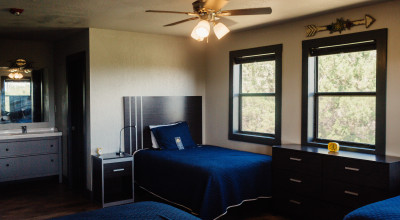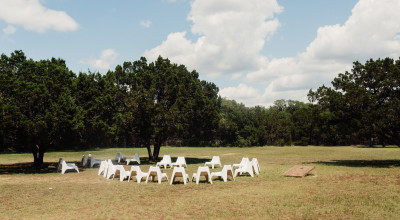Why Length of Stay in Treatment Matters
October 14th, 2025
The length of stay in residential treatment isn’t just a number—it can mean the difference between a meaningful recovery and returning to square one. Many who hesitate to commit worry about stepping away from “real life,” but leaving too soon often leads to repeated treatment, weariness, and disappointment. For some, it will mean the difference between life and death.
According to Vista’s outcome data, only 24.1% of clients with stays of 7–20 days were abstinent at one year, whereas 46.8% of those who remained 90+ days reported not using alcohol or nonprescribed drugs. This nearly doubling of success underscores why treatment duration and optimal length of stay (LOS) deserve serious consideration from both patients and providers.
What Is “Length of Stay” in Residential Treatment?
“Length of stay” refers to how long a person remains in a residential or inpatient treatment setting before discharge (whether planned or unplanned). In addiction and mental health care, it is an indicator of how much help a person receives. It matters because treatment for complex issues—like substance use disorders, trauma, and multiple diagnoses—requires sustained time to establish stabilization, insight, skill-building, and coping strategies.
In many studies, residential stays under 30 days are considered “short-term,” whereas stays of 60–90 days (or longer) fall under “mid-term” or “long-term.”
Phases in Treatment by Duration
Here’s an illustrative breakdown of what often happens over time:
- Days 0–30: Medical stabilization, detox protocols, begin therapy, manage withdrawal
- Days 30–60: Deep therapeutic work, exploring trauma, core beliefs, relapse triggers
- Days 60–90+: Integration, life skills, relapse planning, transition readiness
This phased view highlights how short durations may cut off the process before deeper growth and relapse prevention skills fully develop.
Why Length of Stay Matters: The Evidence
Multiple studies show that individuals who remain in residential treatment longer are more likely to achieve lasting recovery. Reviews highlight higher rates of abstinence, fewer re-admissions, and better psychosocial functioning with longer stays. One study found that it took about 37-38 days on average to see measurable changes in psychological recovery and well-being emerge [1]. This shows that “typical” 30-day treatment ends before most people have a chance to make the changes they need. A European follow-up study confirmed that treatment lasting at least 60 days predicted better abstinence outcomes years later [2]. These findings consistently underline that leaving early is not just a risk—it is one of the strongest predictors of relapse [3].
At Windmill Wellness Ranch, our internal outcome data confirms these findings. Clients who stay with us longer tend to do better. This is likely why we have been independently confirmed to have some of the best outcomes in the nation, as shown by Trac9’s comparison of our results to national averages.
Unfortunately, media and social messages make it sound like short-term treatment is what everyone should expect, even though short-term treatment was created to satisfy insurance companies that wanted to save money. Making major changes in someone’s life is an area where convenience and saving money don’t get the results. In fact, trying to cut corners often leads to more treatment later, which turns out to be less convenient and more expensive.
What Happens When the Stay Is Too Short?
When someone exits residential treatment before their treatment plan is complete, the gains made are often fragile. Coping tools may not be fully internalized, trauma or cravings remain unprocessed, and relapse-prevention strategies are left unfinished. Many people describe leaving with a sense of “unfinished business” that undermines confidence. What initially seems like saving time can end up costing far more in repeated treatment, financial strain, and emotional toll [4].
Factors That Shape “Ideal” Length of Stay
There is no universal “right” duration for everyone. The ideal length of stay depends on the severity and chronicity of substance use, the presence of co-occurring mental health disorders, and the individual’s stage of motivation. External factors also matter: level of family or community support, the stability of a home environment, and the presence of ongoing outpatient or alumni care. For many people, healing progresses in phases, and it simply takes time to move through stabilization, trauma processing, and integration.
Co-Occurring Conditions (When They Appear Together)
Many people who enter residential treatment also struggle with depression, anxiety, post-traumatic stress disorder, bipolar disorder, or borderline personality traits. Others may live with chronic pain or cognitive challenges that make learning new skills more difficult. These overlapping issues mean that the healing process requires more time and more integrated care—another reason why length of stay is so critical.
Supporting a Loved One Through Lengthy Residential Care
If a friend, partner, or family member is considering or entering residential care, here’s how to help:
- Get support for yourself – The most helpful thing you can do for your loved one is to be okay yourself. Don’t try to be strong for them, get help so you can be there for others. It’s good to have some of your support come from people who understand the issues but aren’t part of your family/friend group, so they can be more objective. This might include groups like Al-Anon or SMART Family & Friends, or professional therapists who know these issues.
- Don’t help them leave early – When they call saying they want to leave, you don’t have to talk them out of it, just tell them you won’t help them take that self-destructive action. Don’t give them money, a place to stay, or a ride to leave, even if they threaten or plead. Let them know you can’t wait to help them successfully discharge, when the professionals at the treatment center tell you they are ready.
- Validate fears – Acknowledge that stepping away is scary, and that sacrificing comfort now can build a safer future. Remind them that many others have had the same fears and gotten through them. Encourage them to talk to staff and other clients at the center who know what this is like and have overcome these fears.
- Stay consistent – Keep your boundaries consistent. “Say what you mean, mean what you say, but don’t say it mean.” If setting or keeping boundaries is hard for you, get support.
- Learn about the process – Understand how therapeutic milestones often unfold in phases (crisis, stabilization, exploration, integration). Recognize that this may apply for both of you.
- Encourage patience – Emphasize that growth is rarely linear—setbacks, discomfort, and resistance are part of deep change. Let them know that you also are working on healing and that it will take time for both of you.
- Prepare for reentry – Make sure you have your own recovery plan, such as family recovery groups and support systems. They should have help at the treatment center to plan for what happens after discharge. You should have your own plans to get ongoing support for yourself.
Our Approach at Windmill Wellness Ranch
At Windmill, we believe that meaningful healing demands the time it deserves. From the moment of assessment, our team develops personalized recommendations that align with each client’s unique needs rather than arbitrary timelines.
Treatment is phase-based, allowing clients to move through containment, deep processing, skill development, and reintegration at a humane pace. Our therapies include trauma-informed individual and group counseling, EMDR, DBT/CBT, IFS, somatic approaches, and experiential methods.
We also have innovative approaches that put us at the forefront of modern treatment. Along with a master-level therapist who they see at least twice per week, each client has their own recovery coach, meaning they will have at least three one-on-one meetings weekly to make the most out of their time in treatment.
Families are invited into the process through our weekly family workshops and SMART Family & Friends meetings, and our alumni network ensures clients stay connected long after discharge. Above all, we encourage finishing the plan, not rushing through it, with a focus on building resilience and long-term recovery.
Hope and Recovery Are Possible
If you are worried that a longer stay might be “too much,” remember that healing takes the time it takes. Exiting treatment early may feel like reclaiming control, but often it brings relapse and frustration. Choosing to stay long enough is an investment in your future—and one that pays off in stability, health, and renewed hope.
At Windmill Wellness Ranch, recovery is possible, and we’re here to walk alongside you. Call 830-223-2055 or contact us online to take the first step toward healing.
References
- Turner, B., & Deane, F. P. (2016). Length of stay as a predictor of reliable change in psychological recovery and well being following residential substance abuse treatment. Therapeutic Communities: The International Journal of Therapeutic Communities, 37(3), 112-120.
- Rolová, G., Lukavská, K., Ghaisová Tibenská, A., Skorkovský, T., Miovský, M., Vevera, J., & Gabrhelik, R. (2025). Factors associated with abstinence in addiction inpatient treatment cohort: a five-year follow-up. Journal of Substance Use, 30(1), 10-16. Rehman, I. U., Ayub, M., & Irfan, M. (2021). Relapse among substance use disorder patients: A systematic review. Substance Abuse Treatment, Prevention, and Policy, 16(1), 66. https://doi.org/10.1186/s13011-021-00347-0
- Lappan, S. N., Brown, A. W., & Hendricks, P. S. (2020). Dropout rates of in‐person psychosocial substance use disorder treatments: a systematic review and meta‐analysis. Addiction, 115(2), 201-217.
- Syan, S. K., Minhas, M., Oshri, A., Costello, J., Sousa, S., Samokhvalov, A. V., ... & MacKillop, J. (2020). Predictors of premature treatment termination in a large residential addiction medicine program. Journal of Substance Abuse Treatment, 117, 108077.
FAQs
Isn’t 30 days enough to “get clean”?
For some, 30 days may support detox and stabilization, but research consistently shows better outcomes with 60–90+ days (Hser et al., 2008).
What if I have work, family, or bills?
Many clients face the same challenges. Our team helps with planning, communication tools, and leave strategies so recovery doesn’t mean abandoning responsibilities.
Can someone leave early if they want?
Yes—clients always have freedom. But most who leave before the advised time later say they wished they had stayed.
How do I know how long I should stay?
Your history, diagnosis, and progress guide this decision. Our assessments and ongoing reviews help determine the right length for you.
What happens after residential treatment?
Transition matters. We provide outpatient care, alumni groups, sober housing connections, and support to make reentry safer and smoother.


